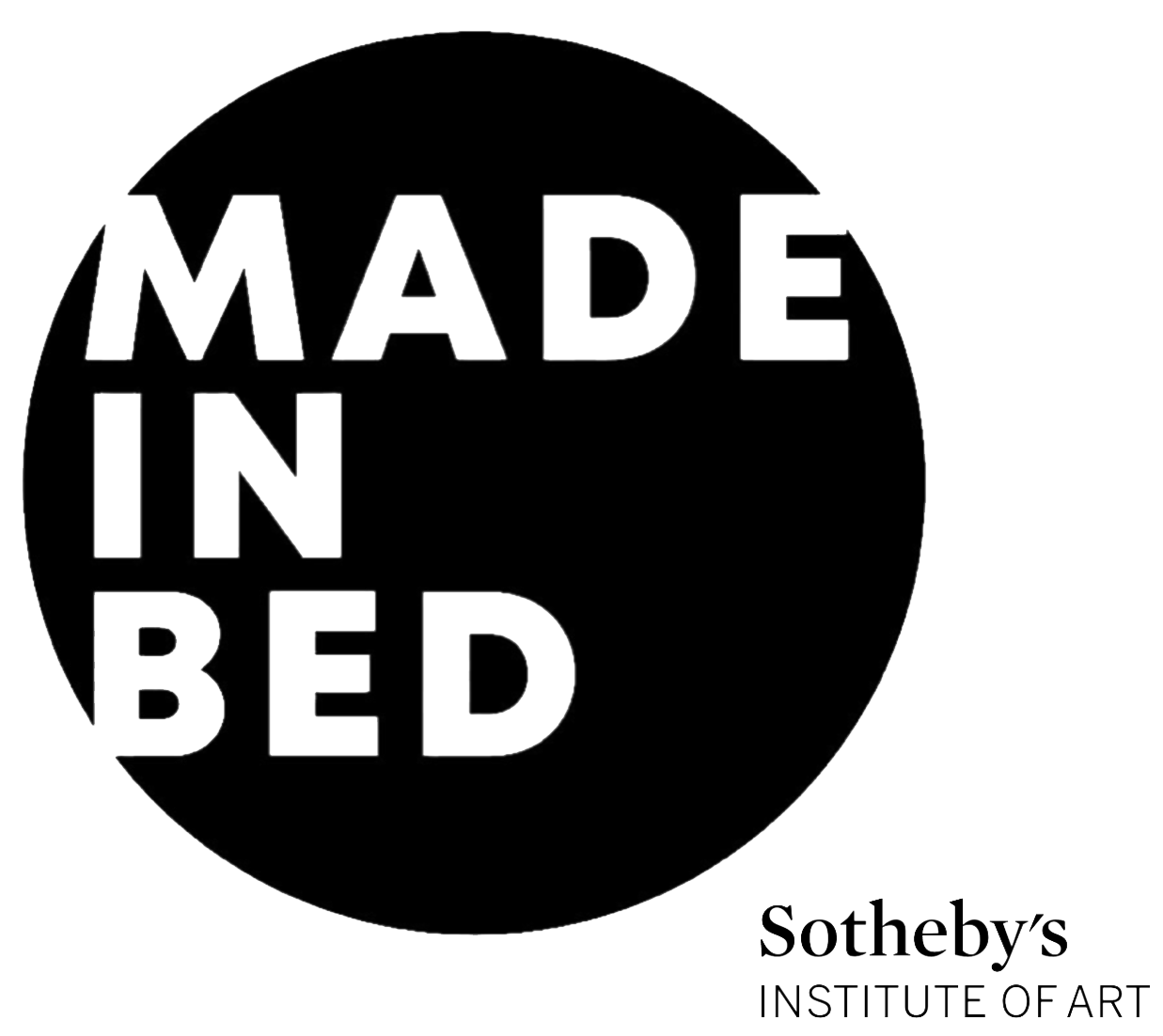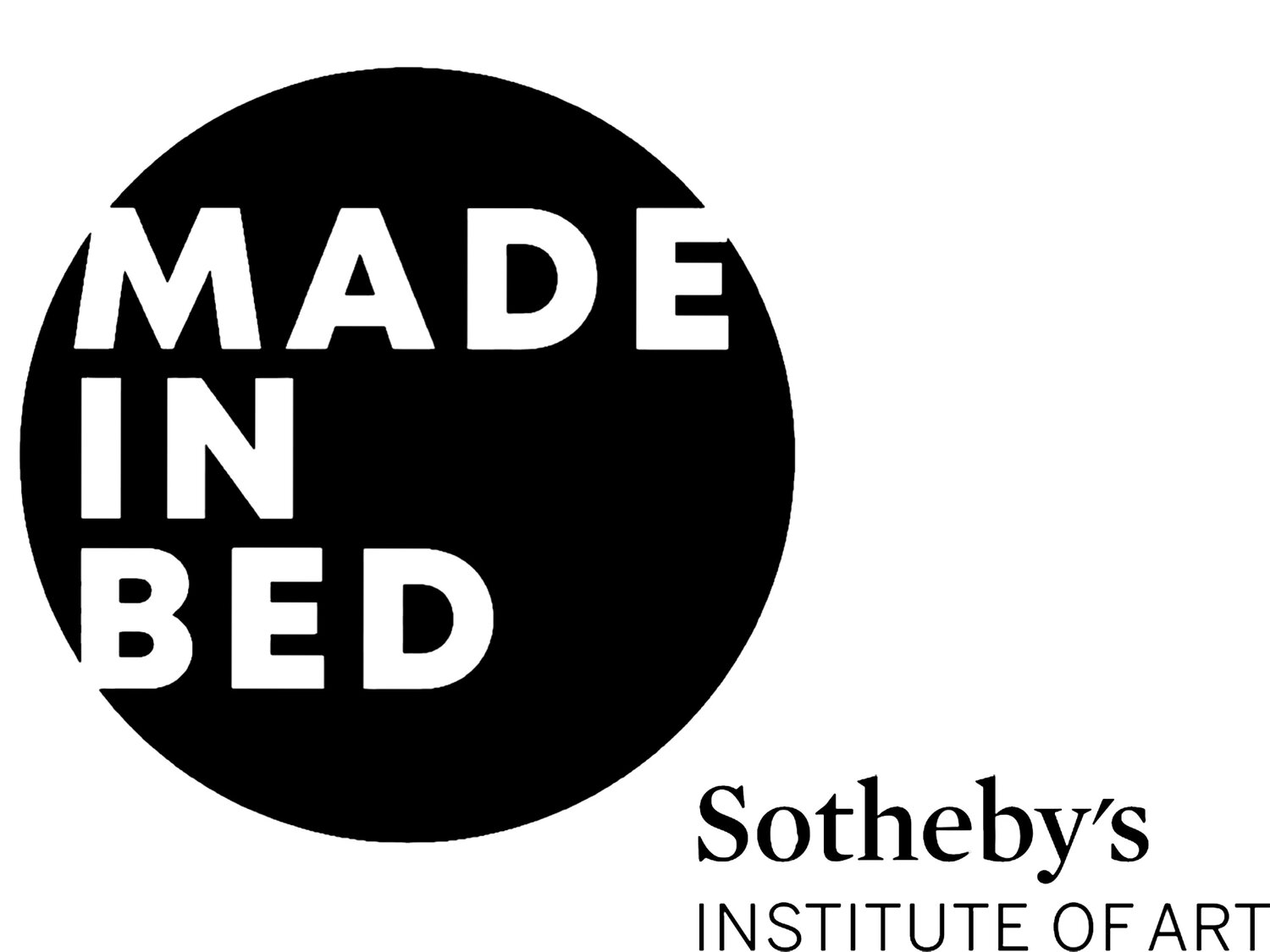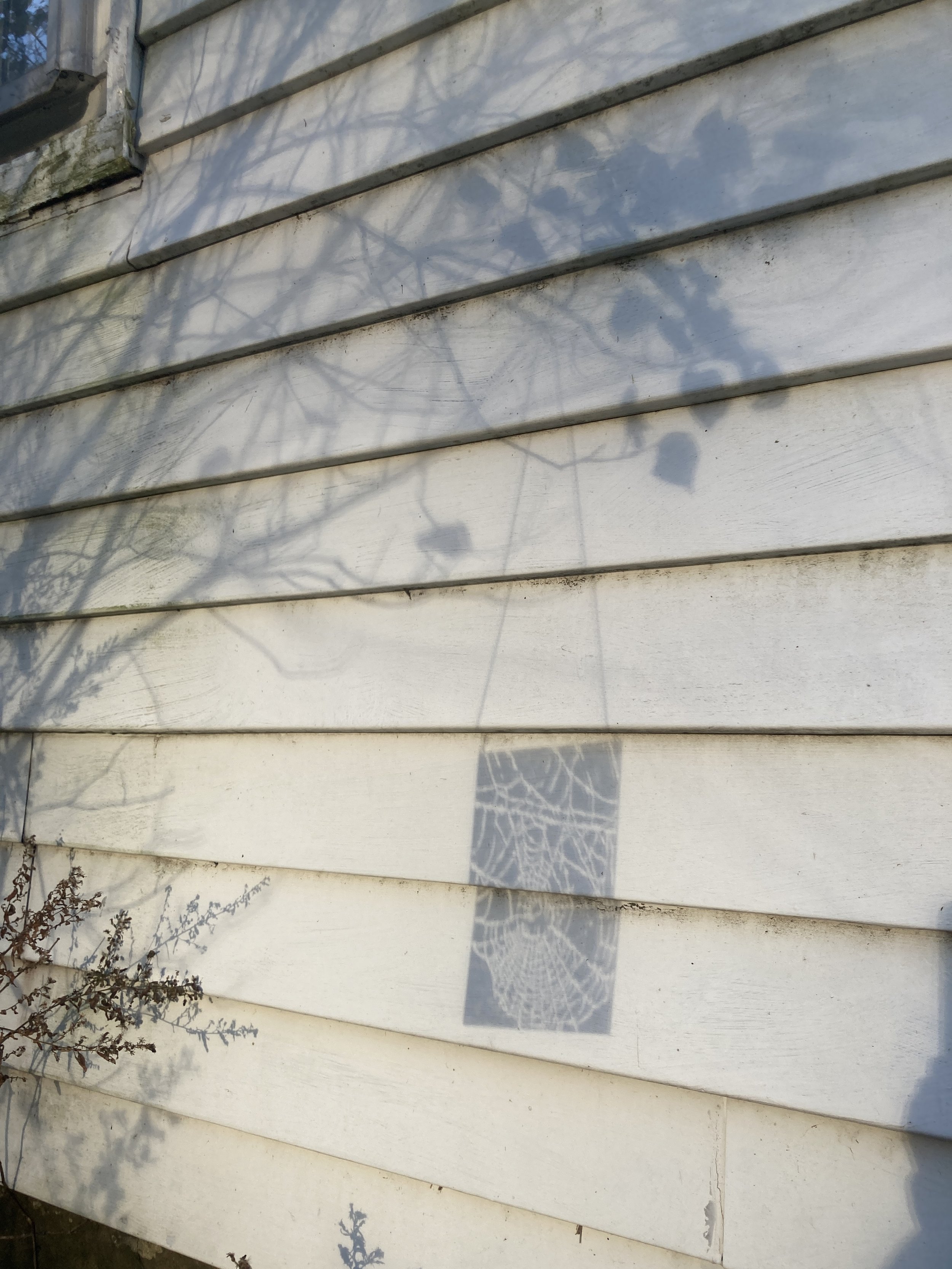Emma Mchold-Burke
Emma Mchold-Burke doesn’t just paint—she collaborates with her materials, embracing their imperfections, their stories, and the way they are impacted by time and place. With a practice spanning from Pennsylvania to Maine, the 26-year old uses her work to explore the natural world’s ephemerality, material as message, and painting as a sculptural form.
Emma Mchold-Burke in Bradford House. Photo Courtesy: the artist.
This fascination with materiality has been central to her artistic journey from the start. Up until her final year studying painting at Temple University she had been obsessed with texture and colour, and how to represent those with the brush.
“At the time, I was painting a bunch of meat. Which I think was an image I settled on because I was super interested in materiality, but I didn't quite know how to capture that other than just picking something that had a very visceral, tactile feel. It was also the red color I really cared about. Because I care about the cadmium material itself. I want cadmium red. I want it everywhere.”
Emma Mchold-Burke, Middle Child and Youngest Child, 2024. Flashe on synthetic fabric, 18 x 13 inches. Photo courtesy: the artist.
It wasn’t until a semester abroad in Rome, however, that she found the language—and the practice—to fully explore the impact materiality had on her work. A class on materials in Florence showed her just how intertwined they were with the history of painting, and that the tools to create could themselves become her subjects.
In Rome she was first taught about her long-time love, rabbit skin glue—a traditional form of a painter’s gesso, or a priming tool. Unlike modern-day gesso, rabbit skin glue can be reactivated with heat, and it is this challenging, imperfect nature that Mchold-Burke finds interesting to play with.
“I consider my work a massive love letter to what these materials can do. I didn't invent these materials. They've been around since the Renaissance dudes were using them. Who am I to say that I'm so interesting because I use rabbit skin glue, for example. It's more that I just want everybody to know about this smelly glue. When you think about all these synthetic, modern approaches, they've been designed to have no kinks. So, it's cool to be using this material that is kind of alive, and you have to work with it. So yeah, rabbit skin glue really changed my life.”
Emma Mchold-Burke, Better Door than Window, 2023. PVA glue on synthetic fabric, 8 x 8 inches. Photo courtesy: the artist.
Shadow Detail: Better Door than Window, 2023. Photo courtesy: the artist.
Mchold-Burke’s work draws on the works of Agnes Martin, Philip Guston, and Eva Hesse to allude to the feeling of the sublime—or the pang of loss that comes with appreciating the ephemerality of beauty. She feels her pieces are forced out of her of their own agency, and that they exist independently of her. She aims to capture the beauty of fleeting moments, creating art that shifts with time, light, and the viewer’s gaze. You have to see her pieces interacting with the world to experience them fully activated. And, as no day has the same amount of sunlight, their activation is singular and incredibly personal. No two moments are the same; no viewer will see a piece in exactly the same way, even ten minutes apart.
Shadow detail: Emma Mchold-Burke, Between the Door and the Screen, 2024. 6 x 4 inches. Photo courtesy: the artist.
Over 2024, she was able to take part in an artist’s residency of sorts, living in the rural Maine home of New York-based artist Katherine Bradford. There, surrounded by other practicing artists and freed from everyday concerns, she found herself obsessing again over new ways of relating to nature, and through new methods.
“It was a moment where I was like, I'm a serious artist with artist friends. We were painting in ten degree (Fahrenheit) weather. So I was kind of immersed in the natural world and the severity of it. It was cool to not let that deter me. You bring your paints in so they don't freeze, and then, when you want to paint, you go back out to the barn. I'm not messing around. I'm willing to, like, be really cold to do this. I'm here to be serious about this.”
This time allowed her to dive into her practice, and develop her ideas about light and shadow in her series of dremel engravings on mirror and Plexi Glass.
“I had this image: I knew it would snow pretty heavily, and the whole yard would be covered. Then these shadows would have the perfect canvas to show up on and not get distorted. I wanted to make something that I could leave out in the cold yard for prolonged periods of time. I think part of it too is we were in that house for nine months, so time was pretty pressing on our minds. So that pushed further the idea that I hope that my work captures: the beautiful parts about passing time and also the painful parts about passing time. Leaving the work out in the yard and letting it be a sundial, or letting people stumble upon it. You're in the natural world, but you've seen somebody influence it and touch it, but they're no longer there. It's just this beautiful interaction between this thing that somehow we get to interact with, and then also respecting it and honoring it by trying to showcase what it can do and what it is.”
Emma Mchold-Burke, Time Simply Passes, 2024. Engraved Plexi Glass, 11 x 9 inches. Photo courtesy: the artist.
Emma Mchold-Burke, Fruit Bats, 2024. Engraved Plexi Glass, 8 x 8 inches. Photo courtesy: the artist.
In October 2023, Mchold-Burke and her partner, Joe Sasso, put on a duo show ‘A Swarm of Dragonflies’ at 82 Parris in Portland, Maine. Sasso’s self-playing guitars and generative tape compositions interwove with Mchold-Burke’s visual works to create an immersive gallery experience rather than a conventional exhibition. ‘A Swarm of Dragonflies,’ in the vein of all her works, reinforced themes of memory and impermanence as visitors moved through the space.
Currently, she is exploring cyanotypes—a printmaking technique once used to document plant life. The process involves coating a natural fiber with a photosensitive solution and blocking out the desired shape. When exposed to sunlight, much like film, the unblocked areas develop into a deep cyan blue, leaving behind the silhouette of the chosen form.
In My Father Had Blue Eyes Too, for example, Mchold-Burke created cyanotype prints on fabric, capturing a periwinkle shell from four different angles. My Middle Name is Grace features cyanotypes sewn onto rabbit-skin-glued synthetic fabric.
Detail: Emma Mchold-Burke, My Father Had Blue Eyes Too, 2023. Flashe, cyanotypes, chain and synthetic fabric, 72 x 36 x 18 inches. Photo courtesy: the artist.
Emma Mchold-Burke, My Middle Name is Grace, 2022. Cyanotypes sewn onto rabbit skin glued synthetic fabric, 63.5 x 21 x 18 inches. Photo courtesy: the artist.
Someday, she’d love to make larger pieces. She acknowledges, however, that she’d have to change her approach to achieve that: “My dream is to learn how to weld so pieces could be permanently outside.”
“I love art-making so much that it almost feels that I am secondary to it. I feel kind of shocked and blessed that I get to make things with my hands everyday and so I don't feel that I am the focus. These materials and the things that they do are the focus. These things that change when each person sees them or change throughout the day, because that's the magic—not me.”
This year, Mchold-Burke kindly completed a MADE IN BED portrait for former Art Markets Co-Editor, Jillian Goss-Holmes.
Learn more about Emma Mchold-Burke on Instagram.
Mairi Alice Dun
Editor In Chief, MADE IN BED














